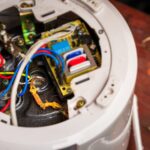Understanding Light sources for optimal illumination
Light sources are essential components in any lighting system. They come in various types, each with unique characteristics. Incandescent bulbs, once common, are now being phased out due to their inefficiency. Fluorescent lamps offer improved energy efficiency but contain mercury. Halogen lamps provide bright, white light but generate significant heat. Light sources have evolved significantly over the years, with LED technology now leading the market.
LED sources have revolutionized the lighting industry. These solid-state devices offer numerous advantages over traditional options. They consume up to 90% less energy than incandescent bulbs. LEDs have a lifespan of 25,000 to 50,000 hours, significantly longer than other light sources. Led sources also produce less heat, making them safer and more efficient for various applications.
When selecting light sources, consider factors like color temperature and Color Rendering Index (CRI). Color temperature, measured in Kelvin (K), ranges from warm (2700K-3000K) to cool (5000K-6500K). CRI, on a scale of 0-100, indicates how accurately a light source renders colors. Higher CRI values (80+) are preferable for most applications. These factors significantly impact the ambiance and functionality of your lighting setup.
Exploring popular LED bulb options for versatile lighting
E27 led bulbs are a popular choice for residential and commercial lighting. The E27 designation refers to the screw base size, which fits standard light sockets. These bulbs come in various wattages, typically ranging from 5W to 20W. E27 led bulbs offer excellent energy efficiency, producing the same light output as higher-wattage incandescent bulbs. They are available in different shapes, including classic A-shape, globe, and candle designs.
GU10 led bulbs are another widely used option, especially for accent and spot lighting. The GU10 base features two prongs and a twist-lock mechanism for secure installation. These bulbs typically have a beam angle between 25 and 120 degrees. GU10 led bulbs are commonly used in recessed ceiling fixtures, track lighting, and desk lamps. They offer precise directional lighting, making them ideal for highlighting artwork or architectural features.
When choosing LED bulbs, consider the following factors:
- Lumen output: Measure of brightness, typically ranging from 450 to 2600 lumens for household bulbs
- Dimmability: Ensure compatibility with existing dimmer switches
- Color consistency: Look for bulbs with a MacAdam step rating of 3 or lower for uniform color
These considerations will help you select the most suitable LED bulbs for your specific lighting needs.
Maximizing efficiency with LED tubes for commercial spaces
LED tubes are an excellent alternative to traditional fluorescent tubes in commercial and industrial settings. They offer significant energy savings and improved light quality. Standard sizes include T8 (1-inch diameter) and T5 (5/8-inch diameter) tubes. Led tubes are available in lengths ranging from 2 feet to 8 feet, accommodating various fixture types.
Installing LED tubes can reduce energy consumption by up to 65% compared to fluorescent tubes. They also have a longer lifespan, typically lasting 50,000 hours or more. This extended durability leads to reduced maintenance costs and less frequent replacements. LED tubes provide instant-on illumination without flickering, enhancing workplace comfort and productivity.
When retrofitting existing fluorescent fixtures with LED tubes, consider the following options:
- Direct wire (Type B): Bypass the ballast for maximum efficiency
- Plug-and-play (Type A): Compatible with existing ballasts for easy installation
- Hybrid (Type A+B): Offer flexibility for both ballast-compatible and direct wire installations
Consult with a lighting professional to determine the best retrofit solution for your specific needs and local regulations.





